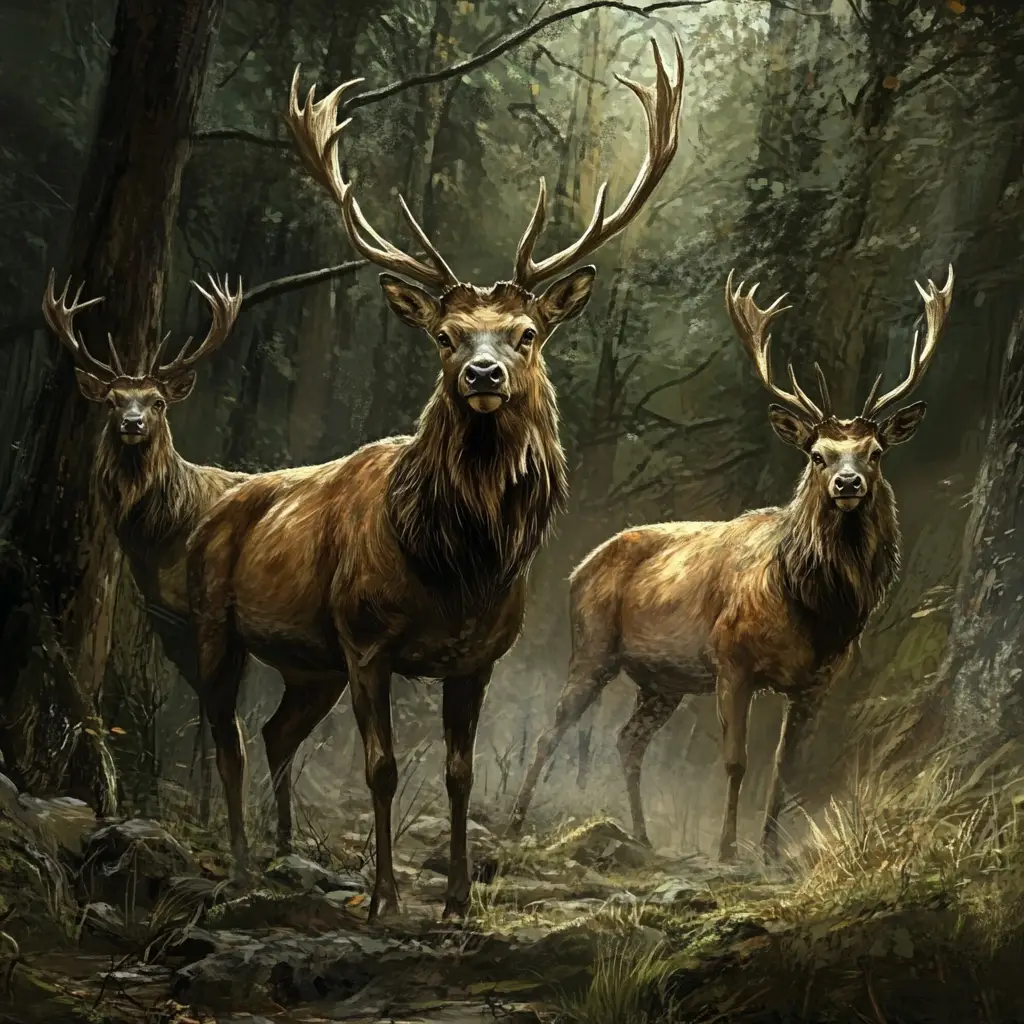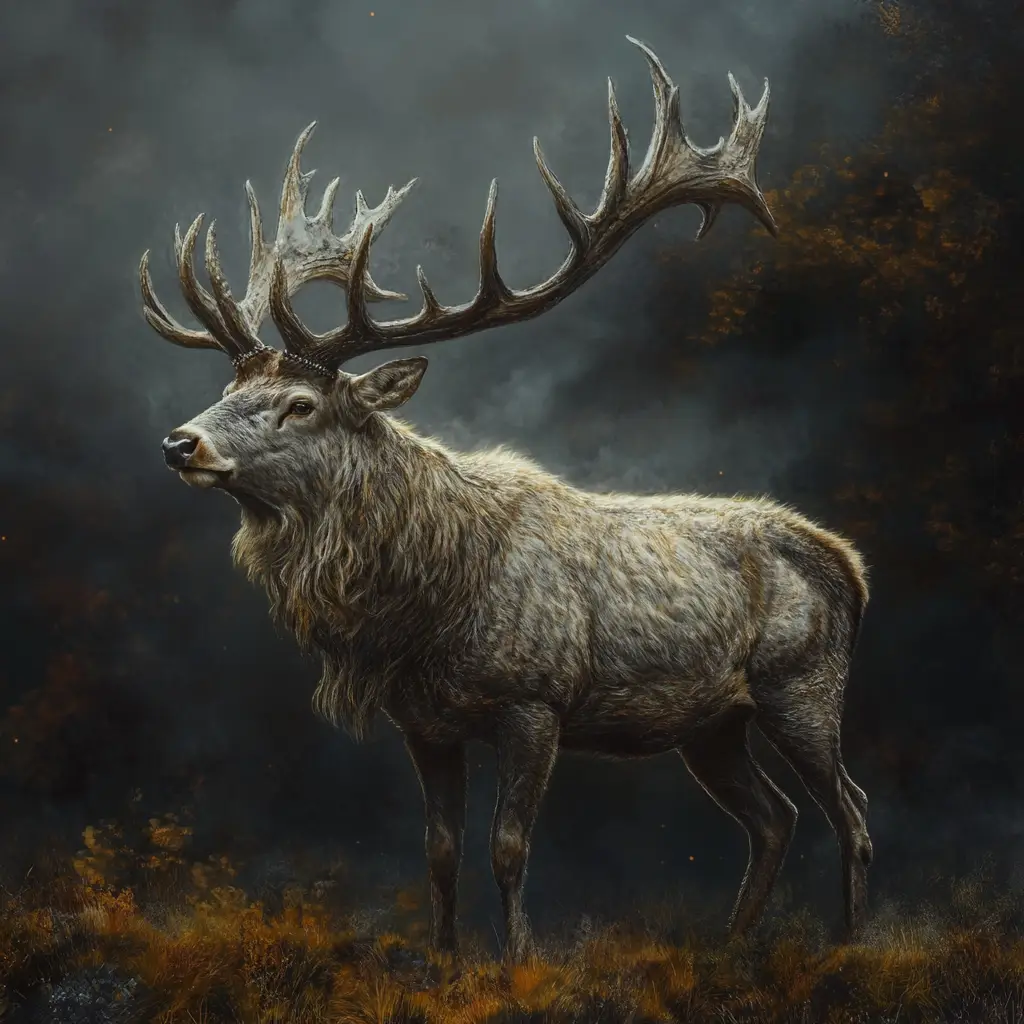Deer and stags in Norse mythology are powerful symbols of cosmic balance, life, and nature, often associated with the central axis of existence, the World Tree, Yggdrasil. These creatures represent interconnectedness, wisdom, and the natural order, serving as messengers, guardians, and symbols of the forces that bind the cosmos together.
Deer as Nature and Life Symbols
In Norse culture, deer are also connected to fertility, vitality, and the natural world, reflecting the close ties that the Norse people had with nature.
Deer and stags are seen as representing the natural forces that sustain life and balance in the cosmos.
These creatures often embody life, growth, fertility, and renewal, reflecting the interconnected relationship between humans, gods, and nature in Norse belief.
Stags in the Context of the Nine Realms
The stags and deer in Norse mythology often appear as essential elements that maintain the cosmic balance of the Nine Realms, connected by Yggdrasil.
They highlight the importance of each realm’s interconnected existence, showcasing how gods, giants, humans, and other creatures are bound together in a complex cosmic system.
Symbolism of Deer and Stags in Norse Mythology
Cosmic Guardians
The stag Eikthyrnir atop Yggdrasil acts as a guardian of cosmic wisdom and balance, ensuring that the realms of gods, giants, and humans remain interconnected and stable.
Fertility and Growth
In Norse culture, deer also symbolize life, renewal, and fertility, connecting nature with the cycles of growth, decay, and rebirth.
Spiritual Connection
In myths, these animals often represent the link between the physical world and the spiritual or divine realms, reinforcing the Norse idea that nature and destiny are inseparable.
In Norse mythology, deer and stags are not just animals but profound cosmic symbols.
Eikthyrnir, the stag perched atop Yggdrasil, serves as a crucial figure connecting all nine realms, highlighting cosmic unity and balance.
These creatures stand as symbols of interconnectedness, life, and natural harmony, showing how everything in the Norse cosmos is bound by a web of interdependent forces.
Their presence in myths signifies the importance of nature’s role in cosmic order, interconnected existence, and the eternal dance between creation, decay, and renewal.



